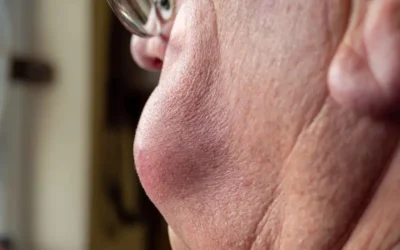Diabetes can lead to a wide variety of health complications such as heart disease, nerve damage, stroke, kidney disease, and vision loss. Diabetes is one of the most common conditions that primary care physicians treat and most providers rely on medical coding services to report the condition and its associated conditions accurately. Diabetic retinopathy (DR) is a common complication associated with this chronic disease and more than 60% of patients with type 2 diabetes develop the condition within the first two decades after the initial diabetes diagnosis. MedPage Today recently reported on a new study which says that primary care-based teleretinal diabetes retinopathy screening (TDRS) has the potential to “identify patients who are at greatest risk for vision loss, thereby optimizing the utilization of in-person evaluations”. The study was conducted by researchers from the Department of Ophthalmology at the Cullen Eye Institute, Baylor College of Medicine, Houston, TX.
A CDC study found that 4.2 million adults had DR and 655,000 had vision-threatening DR in the US. About one in three people have DR, reports the CDC. Vision problems and blindness caused by DR can be prevented through good control of blood sugar and blood pressure levels and early detection and treatment of eye diseases. Digital cameras with stereoscopic capabilities can identify subtle neovascularization and macular edema. However, the Houston researchers point out several reasons why detection is not easy:
- People affected by DR do not have symptoms in the early stages, making annual screening exams critical
- The demand for annual screening exams by patients with DR is far greater than the supply of ophthalmologists
- Patients with diabetes normally visit their primary care provider 3 or 4 times per year, while only about 50% visit an eye-care specialist once a year
Telemedicine is a feasible option to detect DR in primary care settings, say researchers. Advances in imaging technology have now made teleretinal screening feasible on a large scale. This will especially benefit people in the rural areas where the availability of eye care providers is limited and there are socioeconomic barriers to care. Two studies proved this:
- A study from the University of Alabama at Birmingham School of Medicine found that teleretinal imaging technology is an efficient option for DR screening. The study covered 3 outpatient clinics with mostly uninsured and minority patients and an outpatient pharmacy setting in an urban environment. A telemedicine screening program successfully detected early stage DR in about 22% of participants as well as other ocular conditions in about 44% of patients.
- Another study published in 2015 showed that telemedicine significantly increased the percentage of patients who had DR screening exams, that DR severity remained quite stable over the period of study, and that most DR cases did not necessitate referral of patients to an ophthalmologist.
The success of telemedicine screening programs for ocular problems largely depends on patient acceptance of this option, according to the article in MedPage Today. One study found that patients preferred face-to-face interaction with their physician and were not willing to participate in a teleretinal screening program. Moreover, people who screen positive in telemedicine DR screening programs do not seek comprehensive eye care for follow-up, according to a study. Therefore, patient education is a critical component to improving compliance with comprehensive eye care advisories for preventing vision loss.
The demand for DR screening is set to increase with the rising incidence of Type 2 diabetes, even among younger populations. Researchers in India and US recently reported that young onset type 2 diabetes patients have an increased risk of developing DR at an earlier stage and at a greater frequency. However, experts concede that several roadblocks will have to be overcome before TDRS can be implemented on a large scale.
While telemedicine has the potential to increase the number of patients being screened for eye disease, eye care specialists who provide teleretinal screening need to report these services accurately. In 2011, the American Medical Association introduced two new CPT codes, 92227 and 92228, for remote imaging with the specific objective of meeting the needs of diabetic retinopathy screening programs which provide remote imaging and data submission to a centralized reading center. The applicable CPT codes for remote imaging are:
92227 – Remote imaging for detection of retinal disease (e.g., retinopathy in a patient with diabetes) with analysis and report under physician supervision, unilateral or bilateral
92228 – Remote imaging for monitoring and management of active retinal disease (e.g., diabetic retinopathy) with physician review, interpretation and report, unilateral or bilateral
92250 – Fundus photography with interpretation and report
Payers have specific reimbursement rules. UnitedHealthcare, for instance, adheres to Medicare coverage guidelines, and provides the following instructions when using these codes:
- Fundus photography is not covered for routine screening and is considered medically necessary only when it would assist in:
- monitoring potential progression of a disease process; or
- guidance in evaluating the need for or response to a specific treatment or intervention.
- Only one of these 3 codes should be used to denote a service.
- CPT instructs that 92227 and 92228 should not be reported in conjunction with 92002-92014, 92133, 92134, 92250 … or with the evaluation and management of the single system organ system, the eye, 99201-99350.
- 92250 and 92228 are global services, which include a professional and a technical component. The components should be reported with modifiers 26 (professional services only for a service/procedure that includes both professional and technical components) or TC (Technical Component) as appropriate, if the entire global service is not performed.
- 92250 and 92228 describe services that are performed bilaterally. Do not use Modifier 50 Bilateral Procedures with these codes. Modifiers LT and RT should only be used if unilateral services are performed.
- Modifier 52, Reduced/Eliminated Services, should be used to indicate unilateral service and modifiers RT and LT are not required in this situation
- Modifier 59 – use for distinct procedural service
- Modifier GY – submit modifier GY with claims for CPT code 92227 (Remote imaging for detection of retinal disease (e.g., retinopathy in a patient with diabetes) with analysis and report under physician supervision, (unilateral or bilateral)
- TC – TC (technical component) charge is identified by adding modifier ‘TC’ to the usual procedure number when charge is made for the technical component alone. Technical component charges are institutional charges and not billed separately by physicians.
- XU – Distinct service modifier XU should be reported to indicate the use of a service that is distinct because it does not overlap usual components of the main service.
A report published in www.retinalphysician.com notes that there are additional considerations affecting claims for reimbursement, such as: who owns the camera, where the camera is physically located, and who employs the assistants or technicians taking the photographs. Moreover, the diagnostic report should include retinal images and contains all relevant ICD codes. With all these complexities, ophthalmologists will do well to rely on efficient outsourced medical coding and billing services to report teleretinal DR screening.



